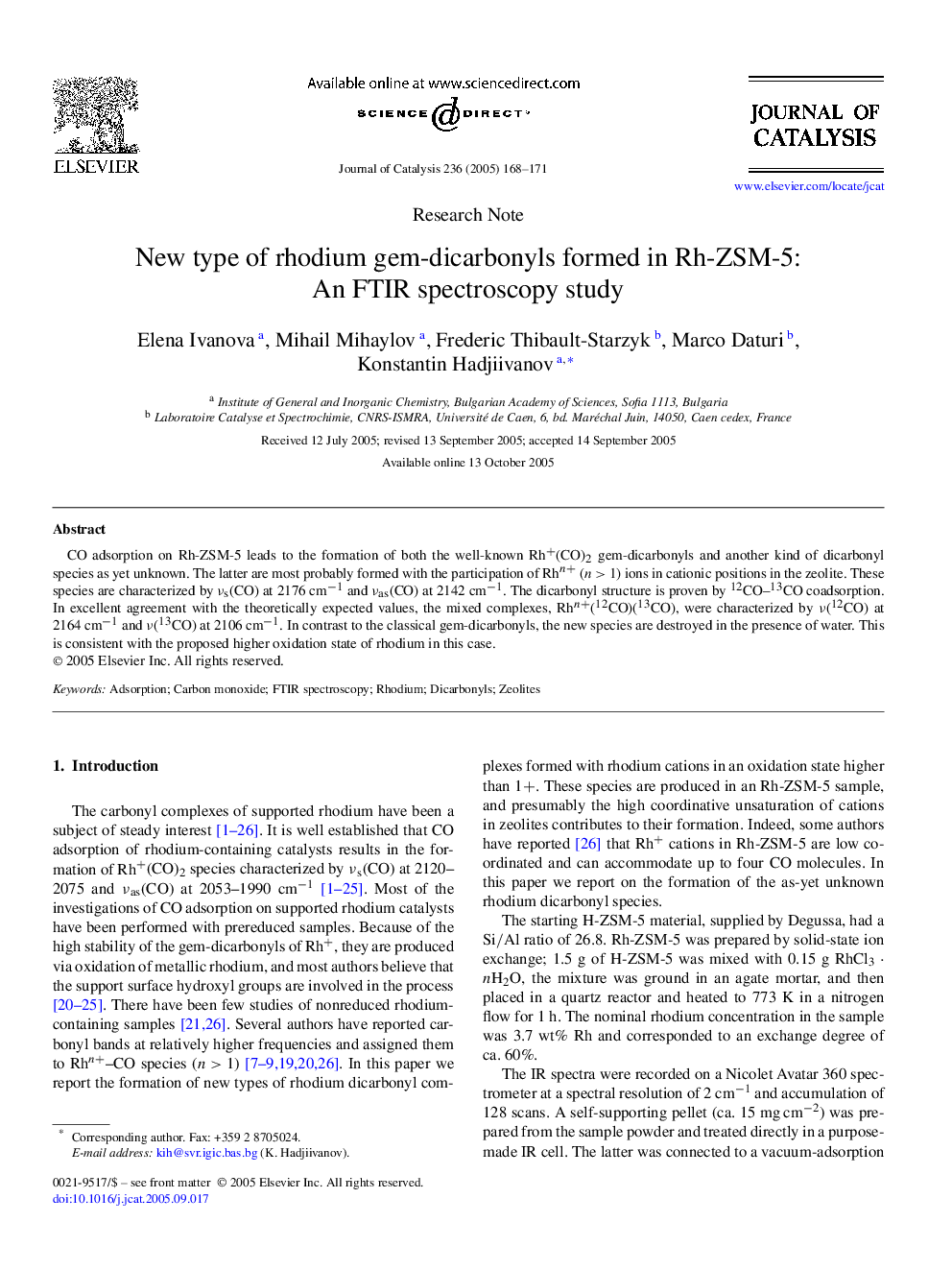| Article ID | Journal | Published Year | Pages | File Type |
|---|---|---|---|---|
| 10244446 | Journal of Catalysis | 2005 | 4 Pages |
Abstract
CO adsorption on Rh-ZSM-5 leads to the formation of both the well-known Rh+(CO)2 gem-dicarbonyls and another kind of dicarbonyl species as yet unknown. The latter are most probably formed with the participation of Rhn+ (n>1) ions in cationic positions in the zeolite. These species are characterized by νs(CO) at 2176 cmâ1 and νas(CO) at 2142 cmâ1. The dicarbonyl structure is proven by 12CO-13CO coadsorption. In excellent agreement with the theoretically expected values, the mixed complexes, Rhn+(12CO)(13CO), were characterized by ν(12CO) at 2164 cmâ1 and ν(13CO) at 2106 cmâ1. In contrast to the classical gem-dicarbonyls, the new species are destroyed in the presence of water. This is consistent with the proposed higher oxidation state of rhodium in this case.
Related Topics
Physical Sciences and Engineering
Chemical Engineering
Catalysis
Authors
Elena Ivanova, Mihail Mihaylov, Frederic Thibault-Starzyk, Marco Daturi, Konstantin Hadjiivanov,
